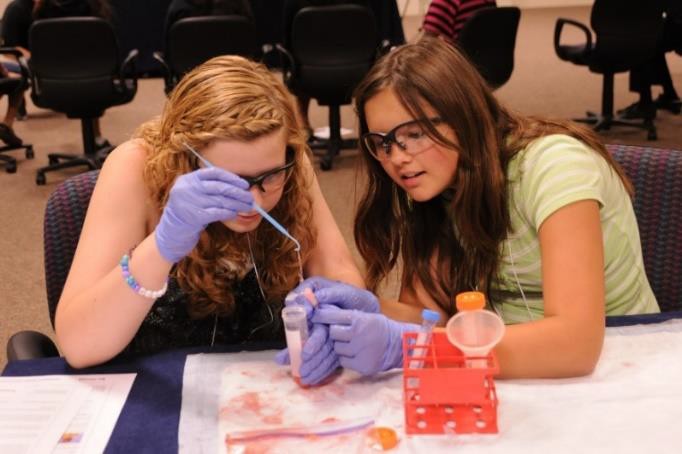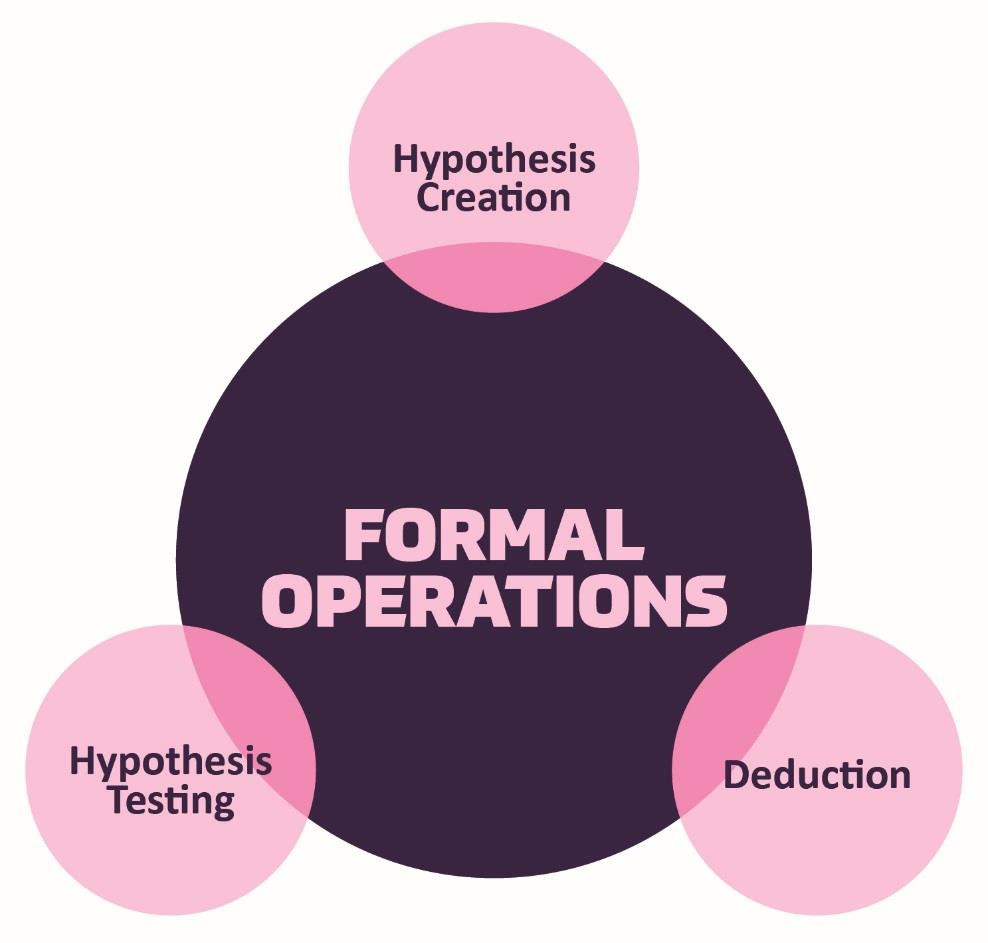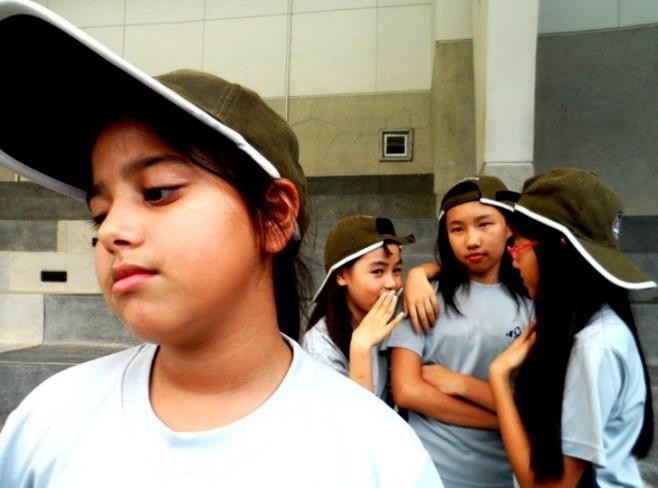Cognitive Development
After this chapter, you should be able to:
- Describe Piaget’s formal operational stage and the characteristics of formal operational thought
- Describe characteristics of adolescent thought proposed by Elkind
- Compare Theories – Lawrence’s Kohlberg’s Moral Development and Carol Gilligan’s Morality of Care
- Explain the areas of transition for adolescence
During adolescence more complex thinking abilities emerge. Researchers suggest this is due to increases in processing speed and efficiency rather than as the result of an increase in mental capacity—in other words, due to improvements in existing skills rather than development of new ones (Bjorkland, 1987; Case, 1985). Let’s explore these improvements.[1]
COGNITIVE THEORISTS: PIAGET & ELKIND
Jean Piaget: Formal Operational Stage of Cognitive Development
Cognition refers to thinking and memory processes, and cognitive development refers to long- term changes in these processes. One of the most widely known perspectives about cognitive development is the cognitive stage theory of a Swiss psychologist named Jean Piaget. Piaget created and studied an account of how children and youth gradually become able to think logically and scientifically. Because his theory is especially popular among educators, we focus on it in this chapter.
Piaget was a psychological constructivist: in his view, learning was proceeded by the interplay of assimilation (adjusting new experiences to fit prior concepts) and accommodation (adjusting concepts to fit new experiences). The to-and-fro of these two processes leads not only to short- term learning, but also to long-term developmental change. The long-term developments are really the main focus of Piaget’s cognitive theory.
As you might remember, Piaget proposed that cognition developed through distinct stages from birth through the end of adolescence. By stages he meant a sequence of thinking patterns with four key features:
- They always happen in the same order.
- No stage is ever skipped.
- Each stage is a significant transformation of the stage before it.
- Each later stage incorporated the earlier stages into itself.
Basically this is the “staircase” model of development. Piaget proposed four major stages of cognitive development, and called them (1) sensorimotor intelligence, (2) preoperational thinking, (3) concrete operational thinking, and (4) formal operational thinking. Each stage is correlated with an age period of childhood, but only approximately. Formal operational thinking appears in adolescence.[1]
During the formal operational stage, adolescents are able to understand abstract principles. They are no longer limited by what can be directly seen or heard, and are able to contemplate such constructs as beauty, love, freedom, and morality. Additionally, while younger children solve problems through trial and error, adolescents demonstrate hypothetical-deductive reasoning, which is developing hypotheses based on what might logically occur. They are able to think about all the possibilities in a situation beforehand, and then test them systematically, (Crain, 2005) because they are able to engage in true scientific thinking.

Video offers a brief introduction to Piaget’s formal operational stage.

In this video, we see responses to a Piagetian hypothetical question to assess is at the concrete or formal operational thinking stage.
Does everyone reach formal operations?
According to Piaget, most people attain some degree of formal operational thinking, but use formal operations primarily in the areas of their strongest interest (Crain, 2005). In fact, most adults do not regularly demonstrate formal operational thought. A possible explanation is that an individual’s thinking has not been sufficiently challenged to demonstrate formal operational thought in all areas.
Adolescent Egocentrism
Once adolescents can understand abstract thoughts, they enter a world of hypothetical possibilities and demonstrate egocentrism, a heightened self-focus. The egocentricity comes from attributing unlimited power to their own thoughts (Crain, 2005). Piaget believed it was not until adolescents took on adult roles that they would be able to learn the limits to their own thoughts.
David Elkind: On Piaget’s Theory
David Elkind (1967) expanded on the concept of Piaget’s adolescent egocentricity. Elkind theorized that the physiological changes that occur during adolescence result in adolescents being primarily concerned with themselves. Additionally, since adolescents fail to differentiate between what others are thinking and their own thoughts, they believe that others are just as fascinated with their behavior and appearance. This belief results in the adolescent anticipating the reactions of others, and consequently constructing an imaginary audience. The imaginary audience is the adolescent’s belief that those around them are as concerned and focused on their appearance as they themselves are (Schwartz, Maynard, & Uzelac, 2008, p. 441). Elkind thought that the imaginary audience contributed to the self-consciousness that occurs during early adolescence. The desire for privacy and the reluctance to share personal information may be a further reaction to feeling under constant observation by others.

Another important consequence of adolescent egocentrism is the personal fable or belief that one is unique, special, and invulnerable to harm. Elkind (1967) explains that because adolescents feel so important to others (imaginary audience) they regard themselves and their feelings as being special and unique. Adolescents believe that only they have experienced strong and diverse emotions, and therefore others could never understand how they feel. This uniqueness in one’s emotional experiences reinforces the adolescent’s belief of invulnerability, especially to death. Adolescents will engage in risky behaviors, such as drinking and driving or unprotected sex, and feel they will not suffer any negative consequences. Elkind believed that adolescent egocentricity emerged in early adolescence and declined in middle adolescence, however, recent research has also identified egocentricity in late adolescence (Schwartz, et al., 2008).
Consequences of Formal Operational Thought
As adolescents are now able to think abstractly and hypothetically, they exhibit many new ways of reflecting on information (Dolgin, 2011). For example, they demonstrate greater introspection or thinking about one’s thoughts and feelings. They begin to imagine how the world could be, which leads them to become idealistic or insisting upon high standards of behavior. Because of their idealism, they may become critical of others, especially adults in their life. Additionally, adolescents can demonstrate hypocrisy, or pretend to be what they are not. Since they are able to recognize what others expect of them, they will conform to those expectations for their emotions and behavior seemingly hypocritical to themselves. Lastly, adolescents can exhibit pseudostupidity, which is when they approach problems at a level that is too complex and they fail because the tasks are too simple. Their new ability to consider alternatives is not completely under control and they appear “stupid” when they are in fact bright, just inexperienced.[2]
In this video, Dr. Boise briefly describes characteristics of adolescent thinking.
- Educational Psychology – Cognitive Development: The Theory of Jean Piaget by Kelvin Seifert and Rosemary Sutton is licensed under CC BY ↵
- Lifespan Development: A Psychological Perspective by Martha Lally and Suzanne Valentine-French is licensed under CC BY-NC-SA 3.0 ↵
COGNITIVE DEVELOPMENT IN ADOLESCENCE
During adolescence, teenagers move beyond concrete thinking and become capable of abstract thought. Teen thinking is also characterized by the ability to consider multiple points of view, imagine hypothetical situations, debate ideas and opinions (e.g., politics, religion, and justice), and form new ideas. In addition, it’s not uncommon for adolescents to question authority or challenge established societal norms.
Cognitive empathy, also known as theory-of-mind, which relates to the ability to take the perspective of others and feel concern for others (Shamay-Tsoory, Tomer, & Aharon-Peretz, 2005). Cognitive empathy begins to increase in adolescence and is an important component of social problem solving and conflict avoidance. According to one longitudinal study, levels of cognitive empathy begin rising in girls around 13 years old, and around 15 years old in boys (Van der Graaff et al., 2013).[1]
Cognitive Changes in the Brain
Early in adolescence, changes in Dopamine, a chemical in the brain that is a neurotransmitter and produces feelings of pleasure, can contribute to increases in adolescents’ sensation-seeking and reward motivation. During adolescence, people tend to do whatever activities produce the most dopamine without fully considering the consequences of such actions. Later in adolescence, the prefrontal cortex, the area of the brain responsible for outcomes, forming judgments, controlling impulses and emotions, also continues to develop (Goldberg, 2001). The difference in timing of the development of these different regions of the brain contributes to more risk taking during middle adolescence because adolescents are motivated to seek thrills (Steinberg, 2008). One of the world’s leading experts on adolescent development, Laurence Steinberg, likens this to engaging a powerful engine before the braking system is in place. The result is that adolescents are prone to risky behaviors more often than children or adults.

Although the most rapid cognitive changes occur during childhood, the brain continues to develop throughout adolescence, and even into the 20s (Weinberger, Elvevåg, & Giedd, 2005). The brain continues to form new neural connections and becomes faster and more efficient because it prunes, or casts off unused neurons and connections (Blakemore, 2008), and produces myelin, the fatty tissue that forms around axons and neurons, which helps speed transmissions between different regions of the brain (Rapoport et al., 1999). This time of rapid cognitive growth for teens, making them more aware of their potential and capabilities, causes a great amount of disequilibrium for them. Theorists have researched cognitive changes and functions and have formed theories based on this developmental period.[2]
In this video, cognitive neuroscientist Sarah-Jayne Blackmore discusses differences in adolescent thinking and brain development.
MORAL DEVELOPMENT-KOHLBERG & GILLIGAN
Lawrence Kohlberg: Moral Development
Kohlberg (1963) built on the work of Piaget and was interested in finding out how our moral reasoning changes as we get older. He wanted to find out how people decide what is right and what is wrong (moral justice). Just as Piaget believed that children’s cognitive development follows specific patterns, Kohlberg argued that we learn our moral values through active thinking and reasoning, and that moral development follows a series of stages. Kohlberg’s six stages are generally organized into three levels of moral reasons. To study moral development, Kohlberg posed moral dilemmas to children, teenagers, and adults. One of Kohlberg’s best known moral dilemmas is the Heinz dilemma:[1]
A woman was on her deathbed. There was one drug that the doctors thought might save her. It was a form of radium that a druggist in the same town had recently discovered. The drug was expensive to make, but the druggist was charging ten times what the drug cost him to produce. He paid $200 for the radium and charged $2,000 for a small dose of the drug. The sick woman’s husband, Heinz, went to everyone he knew to borrow the money, but he could only get together about $1,000 which is half of what it cost. He told the druggist that his wife was dying and asked him to sell it cheaper or let him pay later. But the druggist said: “No, I discovered the drug and I’m going to make money from it.” So Heinz got desperate and broke into the man’s laboratory to steal the drug for his wife. Should Heinz have broken into the laboratory to steal the drug for his wife? Why or why not?[2]
Based on their reasoning behind their responses (not whether they thought Heinz made the right choice or not), Kohlberg placed each person in one of the stages as described in the following image. Kohlberg’s stages are described in further detail below:[3]

Level One – Preconventional Morality
In stage one, moral reasoning is based on concepts of punishment. The child believes that if the consequence for an action is punishment, then the action was wrong. In the second stage, the child bases his or her thinking on self-interest and reward (“You scratch my back, I’ll scratch yours”). The youngest subjects seemed to answer based on what would happen to the man as a result of the act. For example, they might say the man should not break into the pharmacy because the pharmacist might find him and beat him. Or they might say that the man should break in and steal the drug and his wife will give him a big kiss. Right or wrong, both decisions were based on what would physically happen to the man as a result of the act. This is a self- centered approach to moral decision-making. He called this most superficial understanding of right and wrong preconventional morality. Preconventional morality focuses on self-interest. Punishment is avoided and rewards are sought. Adults can also fall into these stages, particularly when they are under pressure.
|
Stage |
Description |
|
Stage 1 |
Focus is on self-interest and punishment is avoided. The man shouldn’t steal the drug, as he may get caught and go to jail. |
|
Stage 2 |
Rewards are sought. A person at this level will argue that the man should steal the drug because he does not want to lose his wife who takes care of him. |
Level Two – Conventional Morality
Those tested who based their answers on what other people would think of the man as a result of his act, were placed in Level Two. For instance, they might say he should break into the store, then everyone would think he was a good husband, or he should not because it is against the law. In either case, right and wrong is determined by what other people think. In stage three, the person wants to please others. At stage four, the person acknowledges the importance of social norms or laws and wants to be a good member of the group or society. A good decision is one that gains the approval of others or one that complies with the law. This he called conventional morality, people care about the effect of their actions on others. Some older children, adolescents, and adults use this reasoning.
|
Stage |
Description |
|
Stage 3 |
Focus is on how situational outcomes impact others and wanting to please and be accepted. The man should steal the drug because that is what good husbands do. |
|
Stage 4 |
People make decisions based on laws or formalized rules. The man should obey the law because stealing is a crime. |
Level Three- Post Conventional Morality
Right and wrong are based on social contracts established for the good of everyone and that can transcend the self and social convention. For example, the man should break into the store because, even if it is against the law, the wife needs the drug and her life is more important than the consequences the man might face for breaking the law. Alternatively, the man should not violate the principle of the right of property because this rule is essential for social order. In either case, the person’s judgment goes beyond what happens to the self. It is based on a concern for others; for society as a whole, or for an ethical standard rather than a legal standard. This level is called postconventional moral development because it goes beyond convention or what other people think to a higher, universal ethical principle of conduct that may or may not be reflected in the law. Notice that such thinking is the kind Supreme Court justices do all day when deliberating whether a law is moral or ethical, which requires being able to think abstractly. Often this is not accomplished until a person reaches adolescence or adulthood. In the fifth stage, laws are recognized as social contracts. The reasons for the laws, like justice, equality, and dignity, are used to evaluate decisions and interpret laws. In the sixth stage, individually determined universal ethical principles are weighed to make moral decisions. Kohlberg said that few people ever reach this stage.[6]
|
Stage |
Description |
|
Stage 5 |
Individuals employ abstract reasoning to justify behaviors. The man should steal the drug because laws can be unjust and you have to consider the whole situation. |
|
Stage 6 |
Moral behavior is based on self-chosen ethical principles. The man should steal the drug because life is more important than property. |
Video reviews the stages of Kohlberg’s theory of moral development. It also presents the Heinz dilemma with some additional questions for thought.
Evaluations of Kohlberg’s Theory
Although research has supported Kohlberg’s idea that moral reasoning changes from an early emphasis on punishment and social rules and regulations to an emphasis on more general ethical principles, as with Piaget’s approach, Kohlberg’s stage model is probably too simple. For one, children may use higher levels of reasoning for some types of problems, but revert to lower levels in situations where doing so is more consistent with their goals or beliefs (Rest, 1979). Second, it has been argued that this stage model is particularly appropriate for Western countries, rather than non-Western, samples in which allegiance to social norms (such as respect for authority) may be particularly important (Haidt, 2001). In addition, there is little correlation between how children score on the moral stages and how they behave in real life.
Perhaps the most important critique of Kohlberg’s theory is that it may describe the moral development of boys better than it describes that of girls. Carol Gilligan has argued that, because of differences in their socialization, males tend to value principles of justice and rights, whereas females value caring for and helping others. Although there is little evidence that boys and girls score differently on Kohlberg’s stages of moral development (Turiel, 1998), it is true that girls and women tend to focus more on issues of caring, helping, and connecting with others than do boys and men (Jaffee & Hyde, 2000).[8]
Carol Gilligan: Morality of Care
Carol Gilligan, whose ideas center on a morality of care, or system of beliefs about human responsibilities, care, and consideration for others, proposed three moral positions that represent different extents or breadth of ethical care. Unlike Kohlberg, or Piaget, she does not claim that the positions form a strictly developmental sequence, but only that they can be ranked hierarchically according to their depth or subtlety. In this respect her theory is “semi- developmental” in a way similar to Maslow’s theory of motivation (Brown & Gilligan, 1992; Taylor, Gilligan, & Sullivan, 1995). The following table summarizes the three moral positions from Gilligan’s theory:
|
Moral Positions |
Definition of What is Morally Good |
|
Position 1: Survival Orientation |
Action that considers one’s personal needs only |
|
Position 2: Conventional Care |
Action that considers others’ needs or preferences but not one’s own |
|
Position 3: Integrated Care |
Action that attempts to coordinate one’s own personal needs with those of others |
Position 1: Caring as Survival
The most basic kind of caring is a survival orientation, in which a person is concerned primarily with his or her own welfare. As a moral position, a survival orientation is obviously not satisfactory for classrooms on a widespread scale. If every student only looked out for himself or herself alone, classroom life might become rather unpleasant. Nonetheless, there are situations in which caring primarily about yourself is both a sign of good mental health and also relevant to teachers. For a child who has been bullied at school or sexually abused at home, for example, it is both healthy and morally desirable to speak out about the bullying or abuse— essentially looking out for the victim’s own needs at the expense of others’, including the bully’s or abuser’s. Speaking out requires a survival orientation and is healthy because in this case, the child is at least caring about herself.
Position 2: Conventional Caring
A more subtle moral position is caring for others, in which a person is concerned about others’ happiness and welfare, and about reconciling or integrating others’ needs where they conflict with each other. In classrooms, students who operate from Position 2 can be very desirable in some ways; they can be kind, considerate, and good at fitting in and at working cooperatively with others. Because these qualities are very welcome in a busy classroom, it can be tempting for teachers to reward students for developing and using them for much of their school careers. The problem with rewarding Position 2 ethics, however, is that doing so neglects the student’s identity—his or her own academic and personal goals or values. Sooner or later, personal goals, values and identity need attention, and educators have a responsibility for assisting students to discover and clarify them. Unfortunately for teachers, students who know what they want may sometimes be more assertive and less automatically compliant than those who do not.
Position 3: Integrated Caring
The most developed form of moral caring in Gilligan’s model is integrated caring, the coordination of personal needs and values with those of others. Now the morally good choice takes account of everyone including yourself, not everyone except yourself.
In classrooms, integrated caring is most likely to surface whenever teachers give students wide, sustained freedom to make choices. If students have little flexibility about their actions, there is little room for considering anyone’s needs or values, whether their own or others’. If the teacher says simply, “Do the homework on page 50 and turn it in tomorrow morning,” then compliance becomes the main issue, not moral choice. But suppose instead that she says something like this: “Over the next two months, figure out an inquiry project about the use of water resources in our town. Organize it any way you want—talk to people, read widely about it, and share it with the class in a way that all of us, including yourself, will find meaningful.”
Although an assignment this general or abstract may not suit some teachers or students, it does pose moral challenges for those who do use it. Why? For one thing, students cannot simply carry out specific instructions, but must decide what aspect of the topic really matters to them. The choice is partly a matter of personal values. For another thing, students have to consider how the topic might be meaningful or important to others in the class. Third, because the time line for completion is relatively far in the future, students may have to weigh personal priorities (like spending time with family on the weekend) against educational priorities (working on the assignment a bit more on the weekend). Some students might have trouble making good choices when given this sort of freedom—and their teachers might therefore be cautious about giving such an assignment. But in a way these hesitations are part of Gilligan’s point: integrated caring is indeed more demanding than the caring based on survival or orientation to others, and not all students may be ready for it.[9]
Video describes how Gilligan’s theory contrasts with Kohlberg’s theory and how gender plays a role in the development of Gilligan’s theory. The three stages of Gilligan’s theory are also explained and illustrated with an example. Please note: The video refers to these three stages as preconventional, conventional, and post conventional, while your textbook refers to the three stags as survival orientation, conventional care, and integrated care.
- Lifespan Development – Module 6: Middle Childhood references Psyc 200 Lifespan Psychology by Laura Overstreet, which is licensed under CC BY ;Beginning Psychology – Chapter 6: Growing and Developing by Charles Stangor is licensed under CC BY-NC-SA 3.0 ↵
- Heinz Dilemma by Wikipedia is licensed under CC BY 3.0 ↵
- Child Growth and Development by Jennifer Paris, Antoinette Ricardo, & Dawn Rymond licensed under CC BY 4.0 ↵
- Lifespan Development: A Psychological Perspective by Martha Lally and Suzanne Valentine-French is licensed under CC BY-NC-SA 3.0 ↵
- Lifespan Development: A Psychological Perspective by Martha Lally and Suzanne Valentine-French is licensed under CC BY-NC-SA 3.0 ↵
- Lifespan Development: A Psychological Perspective by Martha Lally and Suzanne Valentine-French is licensed under CC BY-NC-SA 3.0 ↵
- Lifespan Development: A Psychological Perspective by Martha Lally and Suzanne Valentine-French is licensed under CC BY-NC-SA 3.0 ↵
- Beginning Psychology – Chapter 6: Growing and Developing by Charles Stangor is licensed under CC BY-NC-SA 3.0 ↵
- Educational Psychology – 4.5 Moral Development: forming a sense of rights and responsibilities by CNX Psychology is licensed under CC BY 4.0 Contemporary Educational Psychology/Chapter 3: Student Development/Moral Development by Wikibooks is licensed under CC BY-SA 3.0 (sections modified by Courtney Boise) ↵
- Psychology – 9.3 Stages of Development by CNX Psychology is licensed under CC BY 4.0 ↵
- Content by Dawn Rymond is licensed under CC BY 4.0; Adolescent Development by Jennifer Lansford is licensed under CC BY-NC-SA 4.0 (sections modified by Courtney Boise) ↵
ADOLESCENCE: A TIME OF TRANSITIONS
Cognitive growth and a new found sense of freedom and independence makes it both easier and more difficult for teens when making choices and coping with upcoming transitions and life decisions.
As adolescents grow older, they encounter age-related transition points that require them to progress into a new role, such as going to college, taking a year off or Gap Year, or starting to work towards a career. Educational expectations vary not only by culture but also by class or socioeconomic status. While middle- or upper-class families may expect their child to attend a four-year university after graduating from high school, other families may expect their child to immediately begin working full-time, as many within their families have done before.[1]
Academic Achievement
Adolescents spend more waking time in school than in any other context (Eccles & Roeser, 2011). Academic achievement during adolescence is predicted by interpersonal (e.g., parental engagement in adolescents’ education), intrapersonal (e.g., intrinsic motivation), and institutional (e.g., school quality) factors. Academic achievement is important in its own right as a marker of positive adjustment during adolescence but also because academic achievement sets the stage for future educational and occupational opportunities. The most serious consequence of school failure, particularly dropping out of school, is the high risk of unemployment or underemployment in adulthood that follows. High achievement can set the stage for college or future vocational training and opportunities.[2]
High School Dropouts
The status dropout rate refers to the percentage of 16 to 24 civilian non-institutionalized year-olds (i.e., excluding those in prison or the military) who are not enrolled in school and do not have high school credentials (either a diploma or an equivalency credential such as a General Educational Development [GED] certificate).[3] The dropout rate among high school students has declined from a rate of 9.7% in 2006, to 5.4% in 2017.[4]
Differences in How Societies Socialize Young Adults
Age transition points require socialization into new roles that can vary widely between societies. For example, in the United Kingdom, when teens finish their secondary schooling (aka high school in the United States), they often take a gap year, or year “off” before entering college.
Frequently, they might take a job, travel, or find other ways to experience another culture. Prince William, the Duke of Cambridge, spent his gap year practicing survival skills in Belize, teaching English in Chile, and working on a dairy farm in the United Kingdom (Prince of Wales 2012a). His brother, Prince Harry, advocated for AIDS orphans in Africa and worked as a jackeroo (a novice ranch hand) in Australia (Prince of Wales 2012b).
 |
 |
In the United States, this life transition point is socialized quite differently, and taking a year off is generally frowned upon. Instead, U.S. youth are encouraged to pick career paths by their mid-teens, to select a college and a major by their late teens, and to have completed all collegiate schooling or technical training for their career by their early twenties.
In other nations, this phase of the life course is tied into conscription, a term that describes compulsory military service. Egypt, Switzerland, Turkey, and Singapore all have this system in place. Youth in these nations (often only the males) are expected to undergo a number of months or years of military training and service.[5]
Adolescents and Independence: Career, Work Experience, and Driving
Adolescents in the Workforce
Many adolescents work summer jobs or during the school year. Some adolescents may enter the workforce full-time. Holding a job may offer teenagers needed monetary funds, as well as an opportunity to learn new skills and develop ideas about future careers. However, there are numerous concerns about teenagers working, especially during the school year. Several studies have found that working more than 20 hours per week can lead to declines in grades, a general disengagement from school (Staff, Schulenberg, & Bachman, 2010; Lee & Staff, 2007; Marsh & Kleitman, 2005), an increase in substance abuse (Longest & Shanahan, 2007), engaging in earlier sexual behavior, and pregnancy (Staff et al., 2011). Like many employee groups, teens have seen a drop in the number of jobs. For example summer jobs available in previous generations have been on a steady decline, according to the United States Department of Labor, Bureau of Labor Statistics (2016).

The Working Poor
A major concern in the United States is the rising number of young people entering the workforce as opposed to continuing their education, particularly the number of adolescents who are from families of low-income. Research demonstrates that education has been a key factor in stability and potential upward mobility, while adolescents from families of low-income are often less able to find well-paying work compared to their middle and high-income peers. Those who work only part time, including many adolescents, are more likely to be classified as working poor compared to those with full-time employment; higher levels of education is predictive of lower likelihood of being among the working poor.[6] In 2021, the working poor included 6.4 million Americans, (U.S. Bureau of Labor Statistics, 2021).[7]
Teenage Drivers
Driving gives teens a sense of freedom and independence from their parents. It can also free up time for parents as they are not shuttling teens to and from school, activities, or work. The National Highway Traffic Safety Administration (NHTSA) reports that in 2014 young drivers (15 to 20 year-olds) accounted for 5.5% (11.7 million) of the total number of drivers (214 million) in the US (National Center for Statistics and Analysis (NCSA), 2016). However, almost 9% of all drivers involved in fatal crashes that year were young drivers (NCSA, 2016), and according to the National Center for Health Statistics (2014), motor vehicle accidents are the leading cause of death for 15 to 20 year-olds. “In all motorized jurisdictions around the world, young, inexperienced drivers have much higher crash rates than older, more experienced drivers” (NCSA, 2016, p. 1).
The rate of fatal crashes is higher for young males than for young females, although the rate was highest for the 15-20 year-old age group regardless of gender. For young males, the rate for fatal crashes was approximately 46 per 100,000 drivers, compared to 20 per 100,000 drivers for young females. The NHTSA (NCSA, 2016) reported that of the young drivers who were killed and who had alcohol in their system, 81% had a blood alcohol count past what was considered the legal limit. Fatal crashes involving alcohol use were higher among young men than young women. The NHTSA also found that teens were less likely to use seat belt restraints if they were driving under the influence of alcohol, and that restraint use decreased as the level of alcohol intoxication increased.
AAA completed a study in 2014 that showed that the following are risk factors for accidents for teen drivers:
- Following cars too closely
- Driving too fast for weather and road conditions
- Distraction from fellow passengers
- Distraction from cell phones
According to the NHTSA, 10% of drivers aged 15 to 19 years involved in fatal crashes were reported to be distracted at the time of the crash; the highest figure for any age group (NCSA, 2016). Distraction coupled with inexperience has been found to greatly increase the risk of an accident (Klauer et al., 2014).
The NHTSA did find that the number of accidents has been on a decline since 2005. They attribute this to greater driver training, more social awareness to the challenges of driving for teenagers, and to changes in laws restricting the drinking age. The NHTSA estimates that the raising of the legal drinking age to 21 in all 50 states and the District of Columbia has saved 30,323 lives since 1975.[8]

In this video, Dr. Boise briefly talks about adolescence as a period of transition.
- Content by Dawn Rymond is licensed under CC BY 4.0 Introduction to Sociology 2e – Chapter 5.4: Socialization Across the Life Course by OpenStax is licensed under CC BY 4.0 ↵
- Adolescent Development by Jennifer Lansford is licensed under CC BY-NC-SA 4.0 ↵
- U.S. Department of Education, National Center for Education Statistics. (2015). The Condition of Education 2015 (NCES 2015-144), Status Dropout Rates.; Lifespan Development: A Psychological Perspective by Martha Lally and Suzanne Valentine-French is licensed under CC BY-NC-SA 3.0 ↵
- The Condition of Education by the National Center for Education Statistics is in the public domain ↵
- Introduction to Sociology 2e – Chapter 5.4: Socialization Across the Life Course by OpenStax is licensed under CC BY 4.0 ↵
- Lifespan Development: A Psychological Perspective by Martha Lally and Suzanne Valentine-French is licensed under CC BY-NC-SA 3.0 Work in the United States by OpenStax is licensed under CC BY 4.0 ↵
- A profile of the working poor, 2021 by the BLS is in the public domain ↵
- Lifespan Development: A Psychological Perspective by Martha Lally and Suzanne Valentine-French is licensed under CC BY-NC-SA 3.0(sections modified by Courtney Boise) ↵

